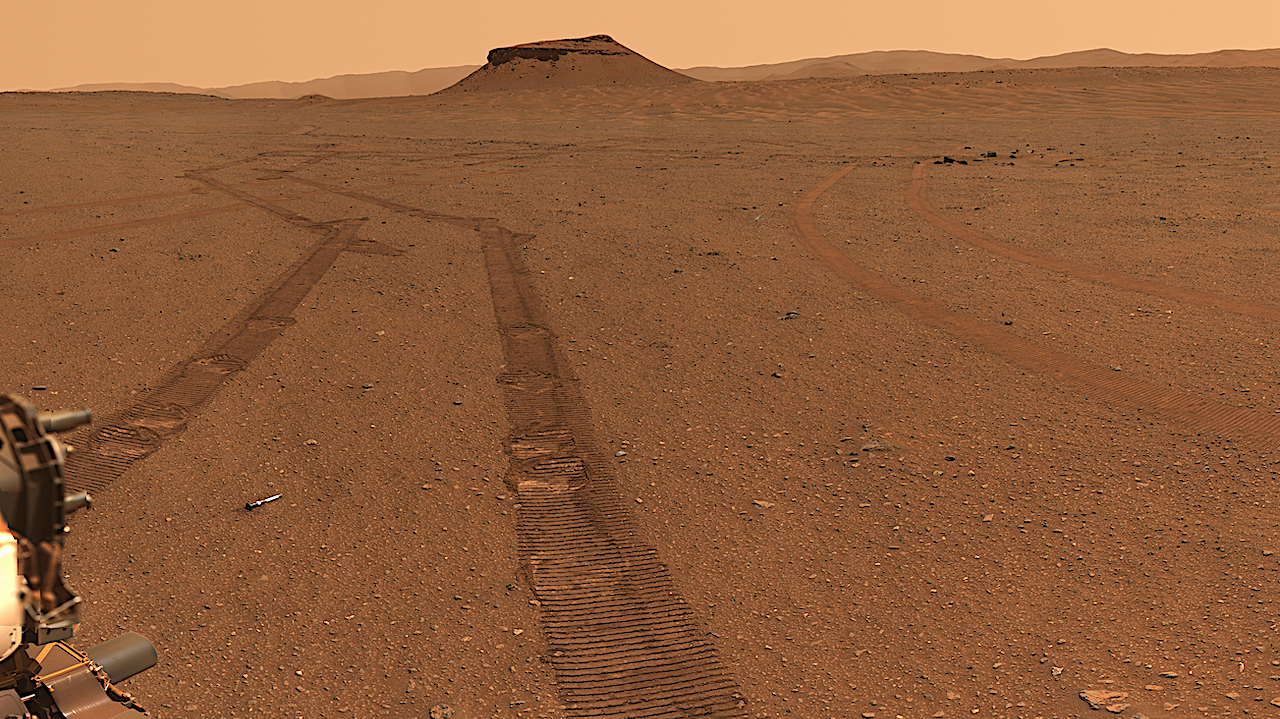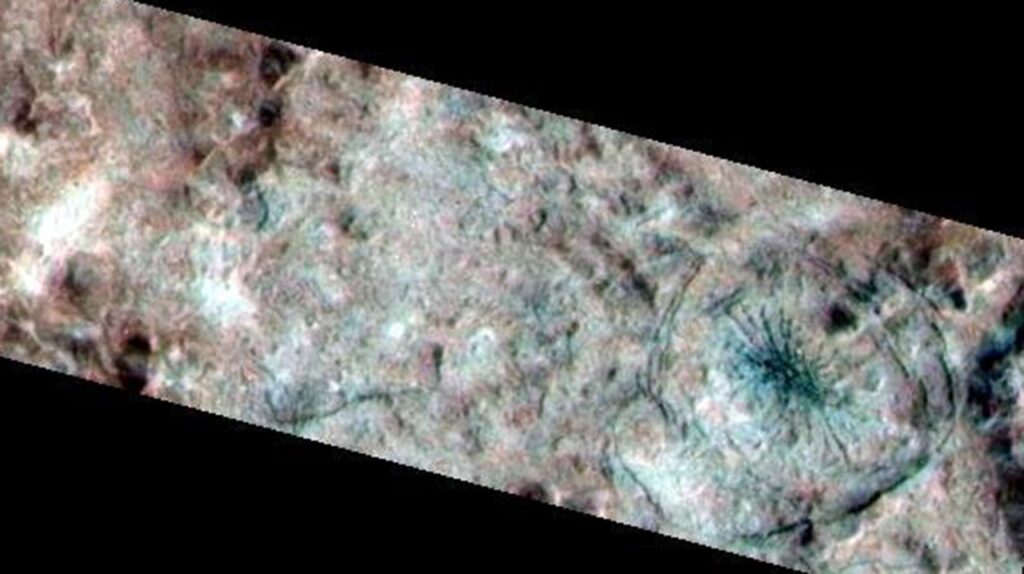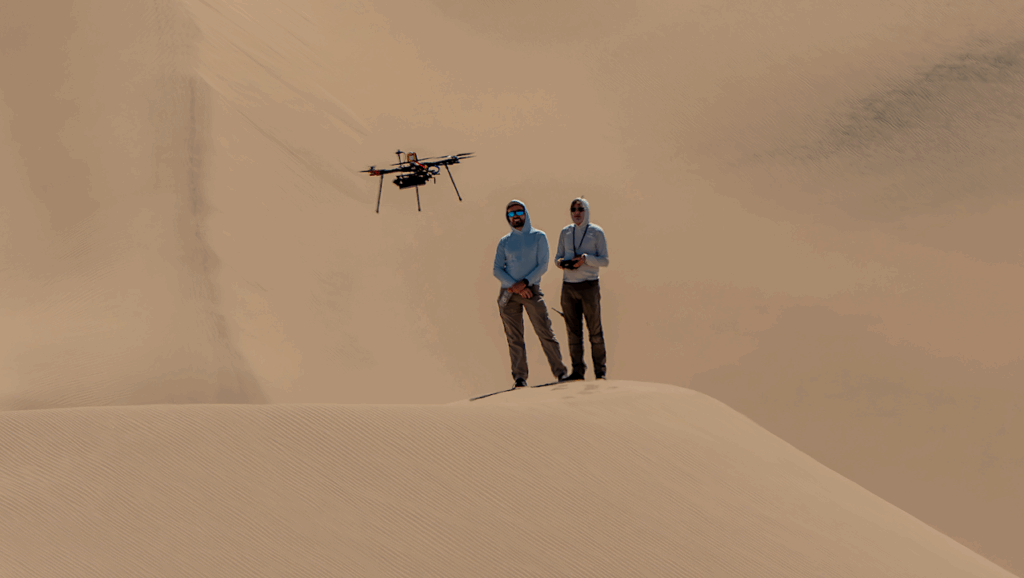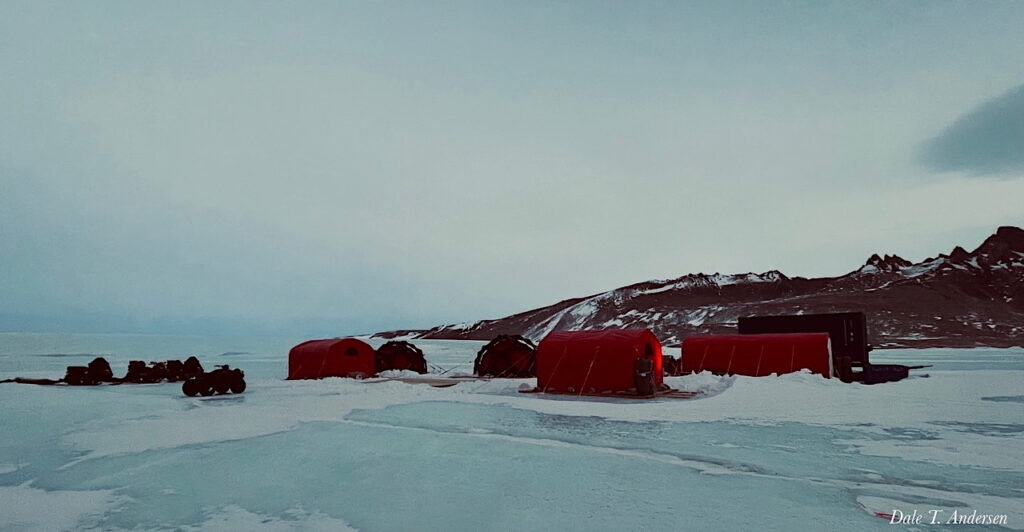Mars Astrobiology Rover Perseverance’s Sample Depot Portrait

NASA’s Perseverance Mars rover captured this portrait of its recently completed sample depot using its Mastcam-Z camera on Jan. 31, 2023, the 693rd Martian day, or sol, of the mission. This panorama is made up of 368 individual images that were stitched together after being sent back to Earth. The color in the scene has been adjusted to show the Martian surface as it would look to the human eye.
Each sample tube is approximately 7 inches (18 centimeters) long and .8 inches (2 centimeters) in diameter.
The “Amalik” sample closest to the rover was approximately 10 feet (3 meters) away from the camera at the time the image was taken. The “Atsah” and “Skyland” samples were approximately 66 feet (20 meters) away. “Bearwallow,” “Coulettes,” “Montdenier,” “Crosswind Lake,” and “Roubion” were approximately 115 to 164 feet (35 to 50 meters) away. “Mageik” and “Malay” were approximately 197 feet (60 meters) away.
This is a natural-color view of the scene, showing the surface as it would appear to a human observer.
Throughout its science campaigns, the rover has been taking a pair of samples from rocks the mission team deems scientifically significant. One sample from each pair taken so far now sits in the depot – along with one atmospheric sample and one “witness” tube – for a total of 10 tubes that were carefully arranged on the surface in a zigzag pattern.
The depot is a crucial milestone in the NASA-ESA (European Space Agency) Mars Sample Return campaign, which aims to bring Mars samples to Earth for closer study. The Perseverance rover will be the primary means to hand off the collected samples to a future robotic lander as part of the campaign. The lander would, in turn, use a robotic arm to place the samples in a containment capsule aboard a small rocket that would blast off to Mars orbit, where another spacecraft would capture the sample container and return it safely to Earth. Hosting a duplicate set, the depot will serve as a backup if Perseverance can’t deliver its samples.
Perseverance built the depot at “Three Forks,” a location within Mars’ Jezero Crater. Billions of years ago, this crater was filled by a lake and delta. Sediment that built up in the delta formed a steep mound that Perseverance will be driving up in the months ahead to arrive at the top of the delta.
Arizona State University leads the operations of the Mastcam-Z instrument, working in collaboration with Malin Space Science Systems in San Diego, on the design, fabrication, testing, and operation of the cameras, and in collaboration with the Neils Bohr Institute of the University of Copenhagen on the design, fabrication, and testing of the calibration targets.
A key objective for Perseverance’s mission on Mars is astrobiology, including the search for signs of ancient microbial life. The rover will characterize the planet’s geology and past climate, pave the way for human exploration of the Red Planet, and be the first mission to collect and cache Martian rock and regolith (broken rock and dust).
Subsequent NASA missions, in cooperation with ESA (European Space Agency), would send spacecraft to Mars to collect these sealed samples from the surface and return them to Earth for in-depth analysis.
The Mars 2020 Perseverance mission is part of NASA’s Moon to Mars exploration approach, which includes Artemis missions to the Moon that will help prepare for human exploration of the Red Planet.
Secondary Creator Credit: NASA/JPL-Caltech/ASU/MSSS larger image
Astrobiology








